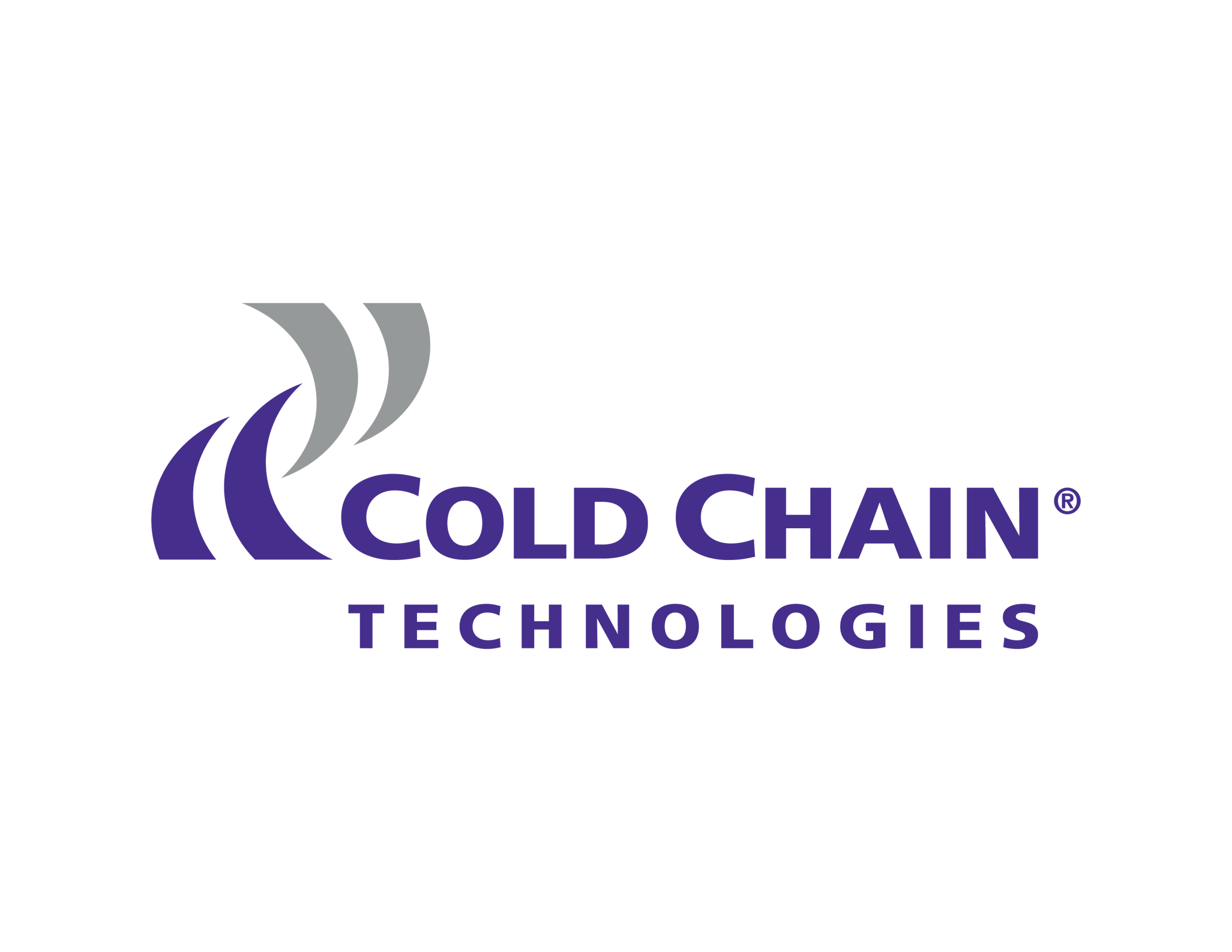Get the facts on cold chain solutions and questions to ask when designing a cold chain solution
A cold chain solution is the development and use of thermal packaging design using thermodynamic knowledge and expertise. A cold chain solution or cold chain management is integral to building and maintaining effective cold supply chains.
The terms cold chain management and cold chain solutions are used when referring to the process of defining, supporting, maintaining, and applying cold chain technologies to package, move, distribute, warehouse, and sell cold chain products.
Integral to an efficient cold chain solution is using thermal packaging that is designed based on thinking beyond what happens inside the package or box.
How can the thermal package maintain the right temperature inside the box? What is happening to the thermal package as it moves through the cold supply chain? How does this impact the design and application of cold chain solutions?
Keep reading to learn more about:
- The 9 elements of a cold chain solution
- How thermodynamics is used in cold chain solutions and thermal packaging
- Questions to ask when designing a cold chain solution
9 Elements of a Cold Chain Solution
A cold chain solution can refer to cold chain management, cold chain logistics, cold chain packaging, cold chain monitoring, and more.
Essentially, cold chain solutions are the ecosystem of processes, products, expertise, technology, and management that keeps the cold supply chain functioning and working.
These 9 elements of a cold chain solution protect your temperature-sensitive products, ensuring quality, efficacy, safety, and value:
Technology
Technology is the common thread within thermal packaging, whether it’s the latest in reusable turn-key thermal packaging, flexible material design and application, thermodynamics expertise and knowledge used to design smarter packaging, the application of phase change material (PCM) refrigerants, or smart manufacturing and qualification processes.
Storage
The cold supply chain and cold chain solutions management starts with storage. Whether it’s the individual ingredients used to produce heat-and-serve frozen meals, the final frozen meal products, or the pharmaceuticals and vaccines used to keep people healthy – each of these requires specialized storage environments.
Cold chain storage equipment and facilities including cold rooms/chillers, vaccine and medical refrigerators, insulated containers, and refrigerants are essential to ensuring temperature-sensitive products can be packaged and moved through the cold supply chain.
Packaging
An effective cold chain solution relies on the correct application of thermal packaging. Remember, no two products are the same. For example shelf-stable dairy products vs. refrigerated dairy products, are essentially the same but they have different thermal packaging requirements.
The same holds true for the thermal packaging you use. Insulated envelopes, containers, refrigerants, medical refrigerators and freezers, and pallet systems – all have a range of capabilities, applications, uses, and benefits.
It’s important your cold chain solution starts with the right packaging used in the right ways at the right times.
Monitoring
Cold chain monitoring through-out the cold supply chain gives you real-time information on the status of your cold chain products and cold chain management process. IoT technology is delivering large gains to cold chain monitoring best practices and the overall quality of cold chain solutions.
Thermal packaging products including data loggers, temperature indicators, and specialized Bluetooth sensors give companies real-time visibility into the status of the cold supply chain and temperature-sensitive products.
Transportation
The global cold supply chain means products are moved across waterways, rail lines, roads, and in the air to reach their destinations. Maintaining the correct cold chain environment is not easy when products are packaged on one continent and then transported to another and then delivered to a rural location or residential address in a busy urban center.
Specialized vehicles such as reefer containers, refrigerated transport vehicles, same-day delivery, inventory and logistics management, and IoT technologies keep cold chain products moving safely and securely.
Customs clearance
A failure to comply with customs clearance requirements can result in delivery delays – causing product loss, risks to product quality, dangers to public safety, and additional expenses for storage, transport, and delivery.
Customs paperwork is a key step in your risk management analysis and best practices, and in ensuring your cold chain solution works.
Qualification
Thermal packaging qualification is a fundamental element of Good Distribution Practices (GDPs) and minimizes risks to product quality during transportation and delivery.
Design qualification, operational qualification, and performance qualification can give you the confidence, verification, and data to prove your thermal packaging complies with industry standards and best practices.
Product management
Having the right types of storage facilities and equipment, warehousing and distribution capabilities and technologies, experienced and trained personnel, and the right thermal packaging supplies on-hand keep cold chain products protected and secure as they move through the cold supply chain.
Delivery
Document review, internal handling best practices, risk management, experienced personnel, and compliant warehouses, storages, and systems are critical in product delivery to B2B and B2C customers. The risks within the cold supply chain are heightened at this stage, with delays in unloading, stranded container ships, traffic congestion, lack of personnel, and improper handling of goods.
Thermodynamics is the branch of physics that deals with conversions of various forms of energy and how these affect temperature, pressure, volume, mechanical action, and work.
In cold chain solutions, thermodynamics is essential to understanding how heat moves or flows when two objects or bodies are close to one another. This heat transfer can occur in one of three ways:
- Conduction heat transfer happens when objects are in direct contact with each other. For example, a package of frozen vegetables left in a metal grocery cart on a summer day absorbs the heat from the metal cart, impacting the temperature and properties of the vegetables.
- Convection heat transfer occurs when a fluid flows over an object. In the cold supply chain, this fluid is typically air, and the rate of heat transfer is based on the speed of the air movement. For example, when a box of vaccines is left in a high traffic room with a door that opens and closes frequently, warm air can enter the room causing a temperature change.
- Radiation heat transfer with photons or electromagnetic waves cause objects to warm and heat. Think of how the sun heats the inside of your car, causing objects to heat up and melt. In cold chain solutions, the goal is to limit radiation heat transfer.
Thermodynamics is core to the design and management of cold chain solutions.
It is not enough to choose a thermal packaging solution based on temperature range. You need to take into consideration how heat moves, flows, and is distributed through-out your cold supply chain.
How to Design a Cold Chain Solution
To design a cold chain solution, ask these questions:
What technologies are available and make the most sense for my cold chain products, supply chain, and customers? Do my customers want reusable turn-key thermal packaging? Have we had challenges with real-time temperature monitoring and alerts?
What role does storage have in our cold chain solution? Do we have multiple parts, ingredients, or components with different storage requirements? Are there different stages of production and manufacturing with differing storage demands? Is my storage on-site or in a remote location?
What types of cold chain products do I need to package, ship, and protect? Will different products be packaged in the same shipment? What are the known risks and challenges during transportation, warehousing, and delivery?
What are the temperature ranges for my cold chain products? Will my products be moving through multiple temperature and humidity zones? What is our success rate in maintaining correct temperature ranges? What are the environmental and human risk factors we need to monitor?
How was the thermal packaging designed? What is the thermal packaging design and qualification process? How does the packaging function under last-mile delivery demands and ecommerce delivery environments?
How are products being transported? How long are products in transit? What impact does time have on the quality and safety of my products? Will my products be stored in a warehouse before being distributed to customers? What are the risk factors in storage, customs clearance, and product management?
This is why we’re here. Our thermal packaging designers and experts are available to help you design a reliable cold chain solution. Talk to us about our thermal packaging design and reusable solutions. Let us help you identify the gaps in your cold chain solution and how best to mitigate risk and error.
Sign up for Cold Chain Tech blog updates to learn the latest in all aspects of cold chain solutions management, reusable cold chain packaging solutions, and how the Cold Chain Tech team helps you maintain the integrity, safety, and quality of your temperature-sensitive products.


